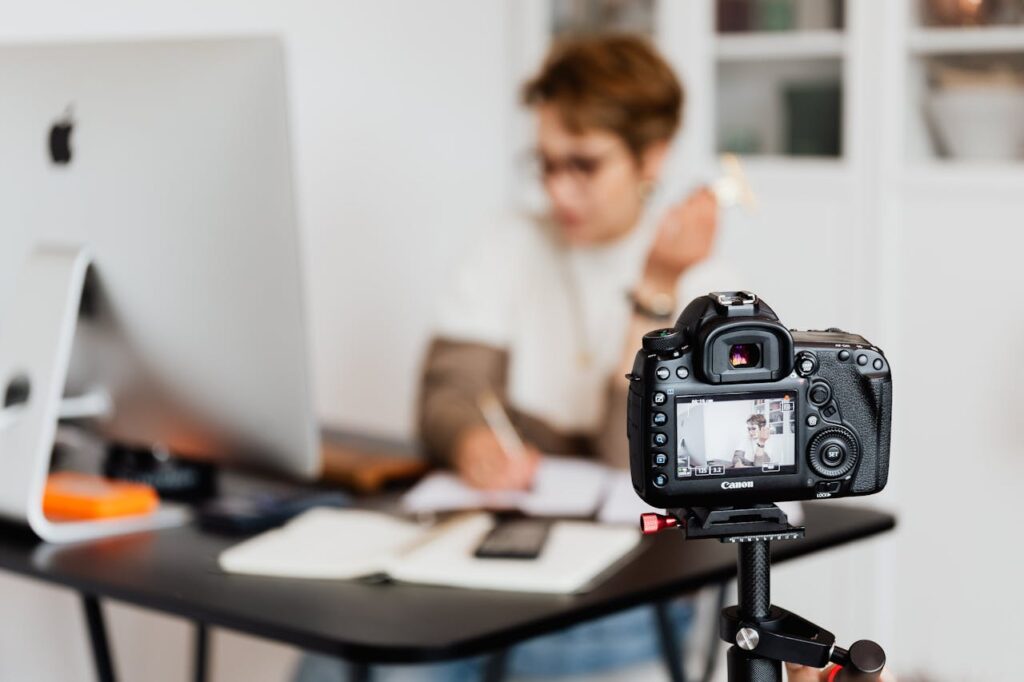The Art of Interviewing: Essential Tips for SMACC Members
As content creators, mastering the art of interviewing can elevate your videos, podcasts, and social media content. Whether you’re working with one or multiple cameras, conducting interviews indoors or outdoors, or managing remote setups, the key to a successful interview is preparation, creativity, and adaptability. This guide is aimed at helping SMACC members enhance their interviewing skills across different formats and settings.
1. Camera Setup: One vs. Multiple Cameras
The number of cameras you use depends on your resources and the style you want for the interview.
- Single-Camera Setup: This is a straightforward option, perfect for beginners or intimate interviews. Focus on framing the interviewee, maintaining eye contact, and making sure your shot captures their face well. If you plan on cutting to different shots in post-production, consider zooming in or changing angles occasionally.
- Multi-Camera Setup: Using two or more cameras provides flexibility for editing, allowing you to cut between different angles (e.g., one on the interviewer, one on the interviewee, and a wide shot). This adds a dynamic feel to the interview but requires extra equipment and more complex editing.
Tip: When using multiple cameras, sync them with a clap or a slate so you can easily align footage during editing.
2. Microphone Essentials
Good audio quality is just as important, if not more, than the visuals in an interview. Even with stunning video, poor audio can ruin the experience for viewers.
- Lavalier (Lapel) Microphones: Small and discreet, lav mics are great for interviews as they allow for clear voice capture without being too intrusive. Clip one onto each participant for crisp sound.
- Shotgun Microphones: These mics are highly directional and ideal for outdoor or noisy environments. They pick up sound from a specific direction and filter out background noise, making them useful for outdoor interviews.
- Handheld Microphones: Common in street interviews, these mics are great when the interviewer and interviewee are moving around or in an informal setting.
Tip: Always test your audio before starting the interview, and have backup batteries or microphones on hand.
3. Lighting Essentials
Lighting can make or break the professionalism of your interview footage. Whether indoors or outdoors, understanding how to control lighting is crucial.
- Indoor Lighting:
- Use soft lighting (diffused light) to avoid harsh shadows on the interviewee’s face. A basic three-point lighting setup (key light, fill light, and backlight) is ideal for achieving a balanced look.
- Position your key light at a 45-degree angle from the subject’s face for natural shadows and highlights.
- Consider using ring lights or LED panels for a portable and flexible solution.
- Outdoor Lighting:
- The sun is your best friend—but also your worst enemy. Use the golden hours (early morning or late afternoon) for softer, more flattering natural light.
- If filming in the middle of the day, avoid direct sunlight. Instead, find shaded areas or use a reflector to bounce light onto your interviewee’s face.
Tip: Always bring portable lighting equipment for control, even when shooting outdoors, as natural light can be unpredictable.
4. Remote Interviews
Remote interviews have become more common, especially in the post-pandemic era. While these can be tricky, a few tips can help ensure a smooth experience:
- Platform Choice: Use reliable platforms like Zoom, Skype, or Riverside.fm, which offer decent video quality and recording capabilities. Ensure that your interviewee is comfortable using the software.
- Audio Quality: Remote interviews often suffer from poor audio. Ask your interviewee to wear headphones with a built-in mic or use an external microphone if possible.
- Video Framing: Advise your interviewee on camera positioning and lighting. They should position their camera at eye level, with a clean, professional background.
Tip: Do a test call beforehand to ensure the technology works well and the audio and video are clear.
5. Preparing Questions
Good preparation is key to conducting a successful interview. Thoughtfully crafted questions can lead to insightful, engaging conversations.
- Research: Know your interviewee’s background, expertise, and recent work. This helps you ask informed and interesting questions.
- Open-Ended Questions: Ask open-ended questions to encourage your interviewee to provide detailed responses. Avoid simple yes/no questions.
- Follow-Up Questions: Be ready to ask follow-up questions based on the interviewee’s responses. This shows you’re engaged and often leads to deeper insights.
Tip: Share a few broad questions with the interviewee beforehand to help them prepare, but keep some spontaneous to maintain authenticity.
6. Putting the Interviewee at Ease
Even experienced speakers can feel nervous in front of a camera. It’s your job as the interviewer to create a comfortable environment.
- Casual Conversation: Start with light, informal conversation before the camera rolls. This helps the interviewee feel relaxed and get used to speaking to you.
- Explain the Process: Let them know the interview can be edited and it’s okay to pause or redo answers if necessary. This helps reduce performance anxiety.
- Body Language: Maintain eye contact, nod, and use positive body language to show that you’re engaged and listening carefully.
7. Don’t Be Afraid to Do Retakes
Retakes are normal, especially if there are interruptions, unclear answers, or technical issues. Let the interviewee know that it’s perfectly fine to stop and redo a part of the interview if needed.
- Maintain Energy: Ensure both you and the interviewee stay positive and engaged during retakes. Doing multiple takes can sometimes drain energy, so keep the mood light and encouraging.
- Edit for Perfection: Remember, you can always cut parts of the interview in post-production, so it’s better to do multiple takes and get it right rather than settling for a subpar response.
Conclusion: The Power of Practice
Conducting interviews is a skill that improves with practice. Whether you’re interviewing for a YouTube series, podcast, or social media content, applying these tips on camera setup, sound, lighting, preparation, and technique will help you create polished, professional interviews.
For SMACC members, mastering these techniques will not only make your interviews look and sound better but will also build your reputation as a skilled content creator. Take your time to practice, experiment with different setups, and never be afraid to refine your approach.
Happy interviewing!
By following these strategies, you’ll be on your way to creating engaging, high-quality interviews that captivate your audience and highlight your interviewee’s expertise!


